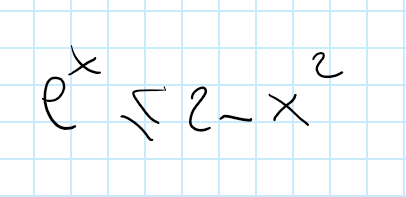Got this inequality:

The question is "the solutions of this inequality are:
A. a closed and limited interval
B. an open unlimited interval
C. two closed unlimited intervals
D. an open limited interval"
Honestly I have no clue how to go about this. I know that e^x is always positive and -x^2 is always negative but idk how that can help me answering the question... can someone please help?

The question is "the solutions of this inequality are:
A. a closed and limited interval
B. an open unlimited interval
C. two closed unlimited intervals
D. an open limited interval"
Honestly I have no clue how to go about this. I know that e^x is always positive and -x^2 is always negative but idk how that can help me answering the question... can someone please help?
